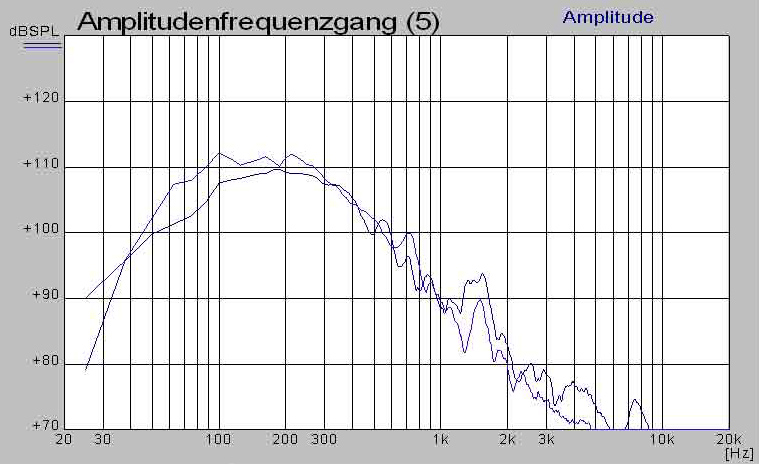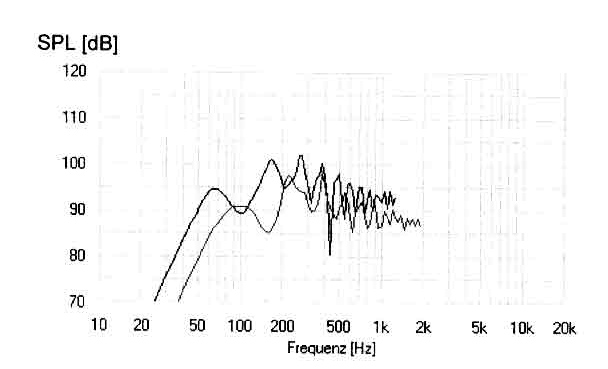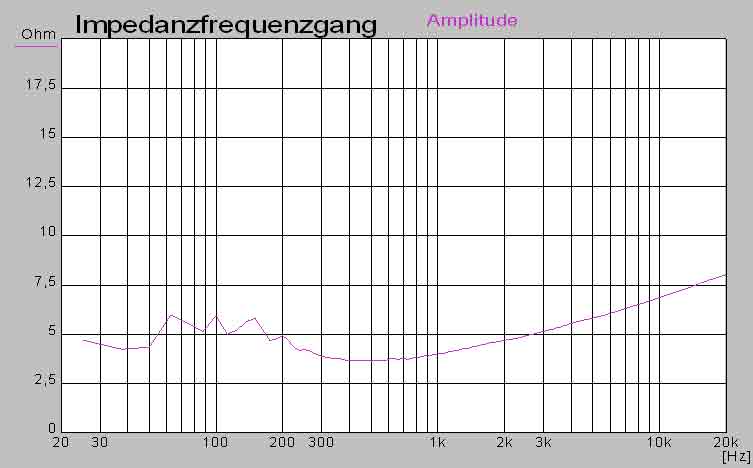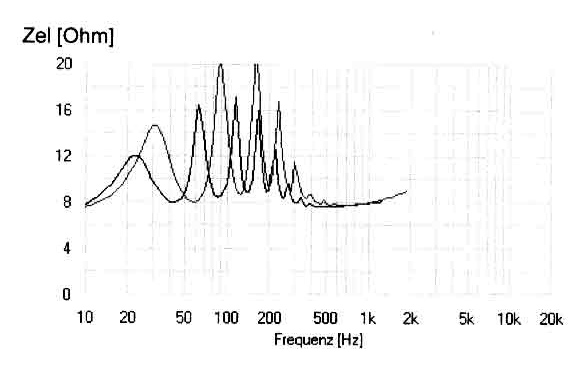|
Posted by Romy the Cat on
11-27-2009
|
|
fiogf49gjkf0d
In the article “The MiniMe revived, Sound and the Lessons” http://www.RomyTheCat.com/TreeItem.aspx?PostID=12341
I wrote the following:
 Romy the Cat wrote: Romy the Cat wrote: | | 6) If you do not do anything special with speaker’s tone then your speaker has no tone. |
|
It might sound ridicules to most but to me it is very much encompasses a few year of my audio practice.
It is difficult to talk about audio tone and there are many reasons why. The majority of audio people is not familiar with the notion or has no interest to be familiar. The small group of audio folks who dos recognize the concept has no ways to assess and collaborate the concept… even within themselves (this is VERY loaded statement). There are other reasons but this is not the main point of my aim. The main point is that if a person even has interest, objectives and desire to do then thing with tone in loudspeaker then he has practically no framework of tools to do so.
The tone, or if you know what I mean “the Absolute Tone”, in loudspeakers is mostly accidental and exists as a byproduct of loudspeaker other duties. There is hardly ever any special thing done in loudspeaker to navigate it tone to a desirable location. To a degree we learned and use different techniques to deal with tone in SET application. We “dye” sound with different passive or active elements and use tubes made by different materials. In loudspeaker however we are tone incapable and we inherit whatever tone comes with drivers and enclosure.
Among all loudspeakers that that I have seen/heard I recognize only two acoustic systems made an efforts in the direction. First - is a small community of “yellow drivers” users who practice to soak the cones of their drivers in different mixtures. From what I have seen 99% end up with absolutely horrible results but there are among them some successes. The second – is Macondo’s Injection Channel. The idea turns out to be immensely successful, so successful that I can’t envision a serious and “offensive” acoustic system without a manageable Tonal Injection. Still, it might be some OTHER WAY to moderate tonal potency of acoustic systems and I would like to dedicate this there for collection of rumors about those other ways. The Cat
|
|
|
|
Posted by Paul S on
11-27-2009
|
|
fiogf49gjkf0d The idea of two (or more) differing drivers covering the same range is intellectually very attractive with respect to tone, and maybe efficiency, as well. OTOH, the problem remains that very few drivers sound seriously good across the board over more than a couple of octaves. In fact, offhand, I can't think of any that do. Unfortunately, the "logical" conclusion from this muddled matrix is that it takes a LOT of drivers to handle tone and dynamics properly over anything approaching FR.
BTW, has anyone figured out how to consistently get tone below about 200Hz?
And does anyone want to address the matter of crossovers for all these drivers?
Paul S
|
|
|
|
Posted by drdna on
11-27-2009
|
|
fiogf49gjkf0d Maybe what we need is five channels to cover all the octave and two or maybe three drivers for each channels. You could then tune the contribution from each driver to get the correct tone for each channel. The only drawback is that it would require maybe 30 drivers total, sort of the opposite of the single driver theory. Maybe it is important to ask what the problem is that moving in this direction is addressing and if there is a simpler way.
|
|
|
|
Posted by Romy the Cat on
11-27-2009
|
|
fiogf49gjkf0d
 drdna wrote: drdna wrote: | | Maybe it is important to ask what the problem is that moving in this direction is addressing … |
|
Yes, the 30 drivers approach will ruin anything else BUT…
When you are a painter and you just did a wonderful portrait using just 5 the most simplistic colors then you selected those specific 5 colors among all bandwidth of spectra and all color available. You made your selection based upon you artistic views. That is fine. However we do not do it in audio. Continuing the painter analogy I would say that in audio (particularly in loudspeakers) we are painters who have a need to paint a portrait but we have only few fortuitous colors on shop and no ways to by more colors. So, it is no surprise that most of our paintings are very alike and very much reminds the painting of the Dorian Gray.
The driver and speaker manufactures and designers to one way or another learned how to make drivers to have more or less acceptable sound that might be quantified: Phase, amplitude etc…. Tone however is very much out of control because of multiple reasons: not demands, do not know how to make, etc. Pay attention, I probably talk about tone more anyone else but I also have no idea how to get tone from drivers. My methods of multi-driver insertion are absurdist in a way but it is only for somebody who never experienced how it might be done properly. Is it best way to moderate tone – absolutely not! That was why I stated this thread.
There is however a catch in it – a better tonally driver does not address the problem as the problem in my view need to be in the MODERATION OF TONE. A given acoustic system need to be dialed into the right Absolute Tone in accordance to many characteristics of playback, including the personal demands of the system owner. A better driver does not address this problem – the insertion does. The S2 driver driven by YO186 has the most insane “coloratura” imaginable but it is not enough itself. It is like you are a very good sprinter but your friend is a very good hot dogs eater – you can’t eat 40 hot-dogs and then run a good sprint. So, probably together you would do a great hot-dogs swallowing fast running team…
Still, saying all of it I do presume that it might be some other ways to produce manageable tone and manageable acoustic pressure by other means then just using different transducers. The manageable is the key in here…
I wonder if the guys who play with Tom Danley’s idea of multi-entry horns might accommodate the notion of injection in the horn the same bandwidth from multiple drivers. The idea of drivers with multiple voice coils and multiple diaphragms is very good one. How to bring it all together, how to repress lobbing and other HF-nastiness I do not know…. It has to be another more elegant way….
The caT
|
|
|
|
Posted by Paul S on
11-28-2009
|
|
fiogf49gjkf0d
The Danley idea - or something quite like it - does look good for LF, but maybe less good for MF and up, I think.
Which takes me back to the whole "point" of the imaginary "single driver"...
Effing around with mix-n-match "systems" back in the day, I got stuck on the fact that the "better" a given driver did at any one thing, the tougher it was to "match" that thing with preceding or succeeding drivers, in terms of sonic "character". Is anything worse than obvious shifts in character as one ascends or descends the frequency and/or dynamic scales?
Of course, the more evolved idea is to have a system that can adopt/mimic myriad characters, seamlessly, FR; but the reality is that the various drivers are pretty much stuck on a trick or two, and that's that. And once we home in on the range where a given driver offers the "most", it always winds up needing "support" on one or both "sides" of its offering. We get stuck in this loop.
More and more, it looks very attractive to get LF "settled" first, since it is necessarily pretty large, and it eats so much power, and it has the big room issues.
And I think this is how some people wind up with the single drivers: they just shrug off LF and peak dynamics to get what they get, which includes a certain "sonic integrity", which in turn takes a certain mindset to fully exploit and appreciate. Perhaps this approach could be understood as "the ultimate table radio approach".
The yellow drivers do have interesting tone capabilities, but without "doping" their spectrum is smeared upwards (and yes, I include the FH/BH in this; and good luck with the doping...). Also, their "optimum dynamic range" covers only a couple of octaves (and it's not exactly optimal, in any case). One possible "solution" I aim to try is high-passing them at, say, 400 - 800 Hz and then turning around and throttling them back a little above 2k. We'll see, eventually.
Meanwhile, I am still playing with the "oops potential" of OB, along with its "bonus 3 dB".
One way or the other, all roads lead to Tone.
Paul S
|
|
|
|
Posted by moreart on
12-04-2009
|
|
fiogf49gjkf0d Hello,
you wrote:
"The idea of two (or more) differing drivers covering the same range is intellectually very attractive with respect to tone, and maybe efficiency, as well. "
What do you think about:
double horns with different driver
with membran movement cross setting
and bass horn mouth distance.
look my double horn or the explanation:
in the middle
http://www.hm-moreart.de/11.htm
|
|
|
|
Posted by zanon on
12-04-2009
|
|
fiogf49gjkf0d Zu Audio treats their drivers (from Eminence) in various ways, not sure if they dip them in liquids, but I would not be surprised. You've heard them so can judge their Tonal results yourself.
|
|
|
|
Posted by Paul S on
12-04-2009
|
|
fiogf49gjkf0d Moreart
Double-driver "back horns"? I am not sure what you are asking about, or what exactly you are promoting, but I do not agree with lightweight, square-section horns, because I have never heard one that worked, apart from shifting certain frequencies around unpredictably. I did some of my own earliest experimenting with the old "theater" horn speakers, like the VOT, with their "folded" plywood "LF" "horns", some with "corner placement", and I would not go back down that road again. Forget for now that I replicated a couple of those "horn" profiles in cement, and they still didn't work...
Tapped horns? For that matter, I never heard a Danley-type "tapped" horn, either; however I am somehow more "convinced" by this "argument", at least as far north as upper bass, possibly lower mids. If the latter, that would be very cool, indeed; almost a freebie. IF it worked this MIGHT (finally) power up that always-too-anemic range. But I refuse to get my hopes up.
"Resonators"? There have been a couple of occasions - the right drugs and the right music - when I heard Helmholz-type speakers sounding very "good". But in my experience this sort of "good" is usually a tip-off that the attractive quality will soon become annoying.
Double (spherical) horns? As Romy keeps trying to tell everyone, horns do not solve problems, they create problems. Cough up $4k to have that Bad Boy turned for you by someone who knows how, mount your $2.5k drivers, listen, and weep. Since I have no serious idea how to build a good single-driver horn, why would I try doubling drivers? I think I understand the "theory"; but the minute you pressurize a driver, all bets are off, and not just with regard to tone, but regarding everything. Basically, pressure changes everything. I'm not saying it could not work; but I am saying you'd better have either low expectations or very deep pockets (and infinite patience) if you start down this path.
Double wood-ish labyrinth? For tone? I certainly don't know what to think. I realize as ponder it that my own idea of "blending" drivers for overall tone does not necessarily mean completely homoginizing them. And there are other things (besides tone) to consider, of course.
Of the multi-driver ideas, I am already down the road a ways with OB, which basically does NOT do bass. But there are some "advantages" with respect to tone and imaging, and I am curious to see how far I can push it. Having no experience with the Danley-type, I am looking at it as a possible way to get some extra power where I need it, possibly at the expense of the "correct" tonal variety. I am not sure what, if any, advantages would be gotten fom two drivers pumping simultaneously into a semi-stiff, lightweight labyrinth.
Again with the dope? For some reason we keep re-visiting the diaphragm doping. Beware! It sounds like some folks do not get the concept of the "dope". How many drivers will they burn through to find out that "change" is not always for the better. I recommend messing with stick-on dots or dabs of "museum putty" first. And understand that someone might refer to Budification as "doping"... Dope your de-whizzered Lowther if it will make it roll off 3 dB/octave from 1.85k. Otherwise, don't do it.
Paul S
|
|
|
|
Posted by moreart on
12-05-2009
|
|
fiogf49gjkf0d Hello,
"I am not sure what you are asking about, or what exactly you are promoting, but I do not agree with lightweight, square-section horns, because I have never heard one that worked,"
i promoting nothing ,
i gave only an info about a world novelty,
you cant´heard it anywhere because it is unique
and i know no construction like my double horns,
my solutions developed until 1972.
here my text you didn´t read:
What makes the membrane movement cross setting and bass horn mouth distance?An extension of the low-transmission area by at least one octave, reducing the housing volume by
up to 50%, in comparison to a single driver solution. Indirectly right / left radiation and bass horn
mouth distance prevents sound pressure increase over 100 Hz, reduction and linearization of
membran stroke gives a very fast, tight, contoured and clean bass response, with outstanding
properties. The double horns here presented are an unexpectedly sensational development of
the horn principle, that "less is more" once comes so true I could not expect.
The theory may now in some areas relativized and rewritten.
My research shows clearly: in normal living rooms is the funnel constante and length
of a bass horn far more important than the horn mouth opening.
That nobody got this the last century is absolutely incomprehensible.
Particularly me in the subsequent search of psycho acoustic effect of
residual tone by triad orgel sounds, Wiki:
"This phenomenon has long been used in organ:
At the same time use of the 8-foot and 51/3-foot, which is about a fifth,
You can hear the 16-foot, that is one octave below the 8-foot.
It can be a lack of fundamental simulate, in which two sound generator
on the octave, and the pure twelfth to the real root nonexistent concert at the same time. "
By the double horns the microphone measured the sound, so it can not be a
psycho effect. That the horn lengths are very close to the organ example,
seems to be a compelling optimization effect of the simulation, in real the
double horn works at least one octave below in the single simulations
expected frequency range.
Why is the bass of the double horns so tight, effortlessly and fast?
By membrane cross setting there are more bass, by bass horn mouth distance
no rise above 100 Hz. So the press chamber can be extremely small, both horns
are extremely small, also the air mass in the horn, also the wall distance in the horn.
That are also two reasons for the fast, contoured bass reproduction
and the relative small enclosure size.
sorry for translation errors
Membran movement cross setting:
My haptic verifications show a rather linear membrane
movement, similar an averaging. What could be less large
"change press ", which again the mechanical membrane charges
minimized and so sound and SPL maximized.




|
|